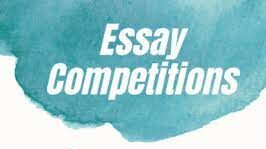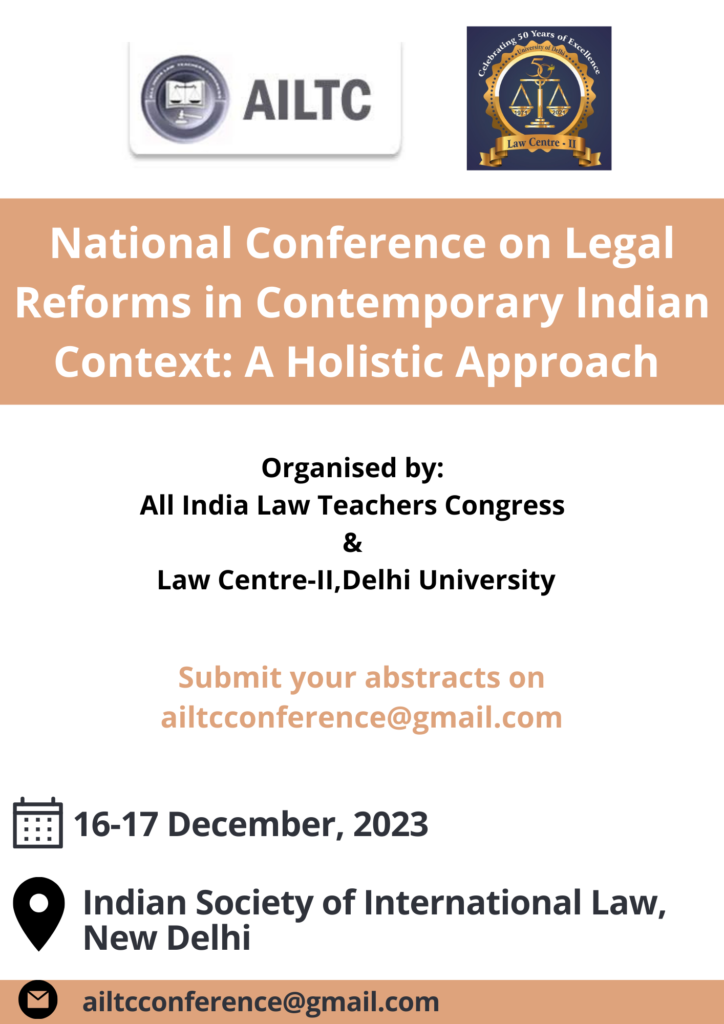CENTRE FOR LAW AND ECONOMICS
The Centre for Law & Economics (CLE) is a centre of excellence for research and training in the discipline of law & economics (also referred to as the economic analysis of law). The centre values rigorous work in the discipline and aims to promote awareness of and research in the field. It carries out courses and conferences for scholars, practitioners and students apart from publications on the economic analysis of contemporary legal issues. It aims to produce quality prescriptions for legislators, regulators and government departments and provide clear explanations and guidance to businesses and ordinary citizens alike. Centre for Law and Economics has always tried to reach out to bright and young minds who have keen interest in employing economic tools and theories for legal analysis. Some of these efforts can be seen at GNLU Centre for Law and Economics page for past events. GNLU also offers a Ph.D. Degree course in economics to promote academic skill and research vigor in economics and law.
THEME OF THE COMPETITION
The subject of ‘law & economics’ or ‘economic analysis of law’ is concerned with this intersection between the subjects of law & economics. It permits the greater use of economic tools and concepts to examine and understand the law in addition to recognizing the importance of law to the analysis of the economy. Today, the field of law & economics has expanded and transformed subjects such as property, contracts, torts, criminal law and procedure, constitutional law, administrative law, environmental law, family law, etc. The inherent advantage of this field is that its objective nature permits the legal system to function rationally and more efficiently. Besides, it provides a useful normative standard for evaluating law and policy. Law & economics is a cutting-edge, interdisciplinary field that applies tools from microeconomic theory to legal rules and structures so as to explain their functioning, evaluate their performance and prescribe alternative rules and structures so as to create optimum social outcomes. Law & economics has seen prolific development in various jurisdictions and has elicited startling results that have changed the way we look at and run our legal systems, winning scholars a number of accolades, notably including the Nobel prize in economics.
This calls for a general theme of law and economics for the essay competition. With further restrictions around the world due to pre and post Covid-19 effect, economic policies have evolved impacting major sectors.
The centre encourages submission of manuscripts for essay focusing on the economic analysis of law. Manuscripts may be in any of the substantive areas of law and economics, including but not limited to the following:
– Basic Areas of Law and Economics: property, contract, tort law and product liability, forensic economics, criminal law, civil law, common law, constitutional and election law.
– Economic Analysis of Litigations: causes of delays/pendency in judicial administration, costs of delays, out of court settlements, judicial reforms, legal procedures, the legal system and illegal behavior, enforcement of law.
– International Law (Public and Private): international trade, law and development, environmental law, human rights law.
– Regulation and Business Law: antitrust, business and securities, regulated industries, business and cyber, real estate.
– Economics of Legal Procedure: the legal system litigation process, illegal behavior and law enforcement.
– Macroeconomics and Law: use of economic tools in public policy analysis.
– Law and Finance: financial sector reforms in India formation of monetary policy, cyber crimes, stock market regulations, sovereign bonds, corporate and banking bankruptcy, bankruptcy code, tax evasion, black money, basel and financial stability board norms, wto and the financial services;
– Market Regulators: IRDA, TRAI, SEBI, PFRDA, antitrust; regulated industries/competition law and working of the commission, consumer laws, financial sector legal reforms commission.
– Other Substantive Areas of Law and Economics: labor, energy, environmental, health, and safety, international, tax, family and personal, immigration.
– Economical Analysis of Contemporary Legal Developments: for instance: anti-defection law, etc.
The above themes are only indicative. We invite essays from other allied areas of law and economics as well.
WHO ARE ELIGIBLE TO CONTRIBUTE
GNLU through its Centre for Law and Economics has been working towards creation of interest an awareness in the legal study using economic tools. Apart from that GNLU also offers a phd degree course in economics. Following this aim further, current edition of GNLU essay competition on law and economics aims to promote young scholars and researchers having avid interest in the field of law and economics. GNLU Centre for law and economics has always tried to reach out to bright and young minds who have keen interest in employing economic tools and theories for legal analysis. Some of these efforts can be seen at GNLU Centre for Law and Economics page for past events.
In order to promote such young minds, the theme of this edition of the essay competition is targeting the following:
– Students/Research scholars pursuing M.A./M.phil/Ph.D discipline in Economics
– Student Research scholars pursuing Ph.D in the interdisciplinary study of law and economics – Students/Research scholars pursuing M.A./M.phil/Ph.D discipline in statistics
– Students/Research scholars pursuing M.A./M.phil/Ph.D discipline in public policy
– Students/Research scholars pursuing M.A./M.phil/Ph.D discipline in development studies
– Students/Research five-year/three LLB discipline
– Students/Research one-year/two-year LLM discipline
– Academicians teaching and researching in the interdisciplinary study of law and economics
– Professionals working in banking, finance or economics field.
This is not an exhaustive list. Students, researchers, academicians, professionals having an avid interest in the interdisciplinary study of law and economics are welcome to contribute in the essay competition too. However, we strongly promote young researchers, scholars and academicians to contribute to this essay competition and be associated with GNLU Centre for Law and Economics.
CASH PRIZES
1ST PRIZE TO BEST ESSAY: 10,000 (INR) CASH PRIZE + PUBLICATION IN GNLU JOURNAL OF
LAW AND ECONOMICS (AFTER INCORPORATING REVIEWER COMMENTS).
2ND PRIZE TO SECOND BEST ESSAY: 5,000 (INR) CASH PRIZE 3RD PRIZE TO THIRD BEST ESSAY: 3,000 (INR) CASH PRIZE
SUBMISSION GUIDELINES
– Soft copies of manuscripts and abstracts are to be uploaded through the google form provided here: Click Here To Submit.
Submissions are to be made in the form of MS Word (2003 or 2007 or 2010 or 2013).
All submissions are to be made via google form.
(Note: write your name and co-author’s name as the file name.)
– Manuscript word limit: 5000-7000 (excluding footnotes and references)
– Submission date: on or before 4th September, 2022.
– Font: Times New Roman. Font size: 12. Line spacing: 1.5. All text should be justified, with a margin spacing of 1” on all sides.
– Headings and Sub-headings must be appropriately numbered as:
1. ___________
1.1. _______
1.2. _______
2. ____________
– Each manuscript must contain:
A. Cover page, which must contain:
i. Full title of paper (times new roman, bold, font size: 16)
ii. Name(s) of contributor(s) and designation (kindly note: the contributors’ names should not be mentioned on any other page)
iii. E-mail and contact number.
B. Detailed index with sub-heading
C. Abstract (150-250). Add minimum 3 keywords.
D. Introduction of a minimum of 150-350 words.
You may structure it like this:
(Note: The guidelines are only indicative and it is not mandatory to follow them.) i. Historical background
ii. Definition
iii. Relevance of the study in view of current Indian/International concern
iv. Structure of the study
E. Main body (4500-6500 words), which may include:
(Note: The guidelines are only indicative and it is not mandatory to follow them.) i. Research queries/questions
ii. Theoretical framework (about the specific topic of paper)
iii. Any application of economic analysis of law (specific topic)
iv. Data & empirical analysis & data interpretations or facts & evidence by author(s) v. other possibilities of application
F. Findings
G. Relevance in world/ suggested policy implication/ limitations of study
H. Conclusion (200-500 words)
I. Recommendation ( 100-200 words)
(Note: The guidelines are only indicative and it is not mandatory to follow them.)
J. References (at the end of the paper, arranged alphabetically)
K. All figures (charts, diagrams, photographic images and line drawings) should be submitted in electronic form. They should be of clear quality, in black and white, and numbered consecutively.
– Tables should be typed and included as a part of the manuscript. They should not be submitted as graphic elements.
– Mathematical expressions, figures and charts should be presented in a way that will be easily printable.
– Tables and diagrams should be numbered consecutively and included in the text. Source must be mentioned below the table.
– Footnoting style to be followed: The Bluebook: A Uniform System of Citation (2015, 20th ed.) – Contributors are requested to strictly follow the citation style for both footnotes and references.
– Your paper should be error free: grammar, spellings, punctuation etc. – your paper must be original and plagiarism free.
In case the authors require some guidance for writing and research in the field of Law and Economics, the GNLU Journal of Law and Economics can be accessed: https://gjle.in/.
For More Details Click HERE








